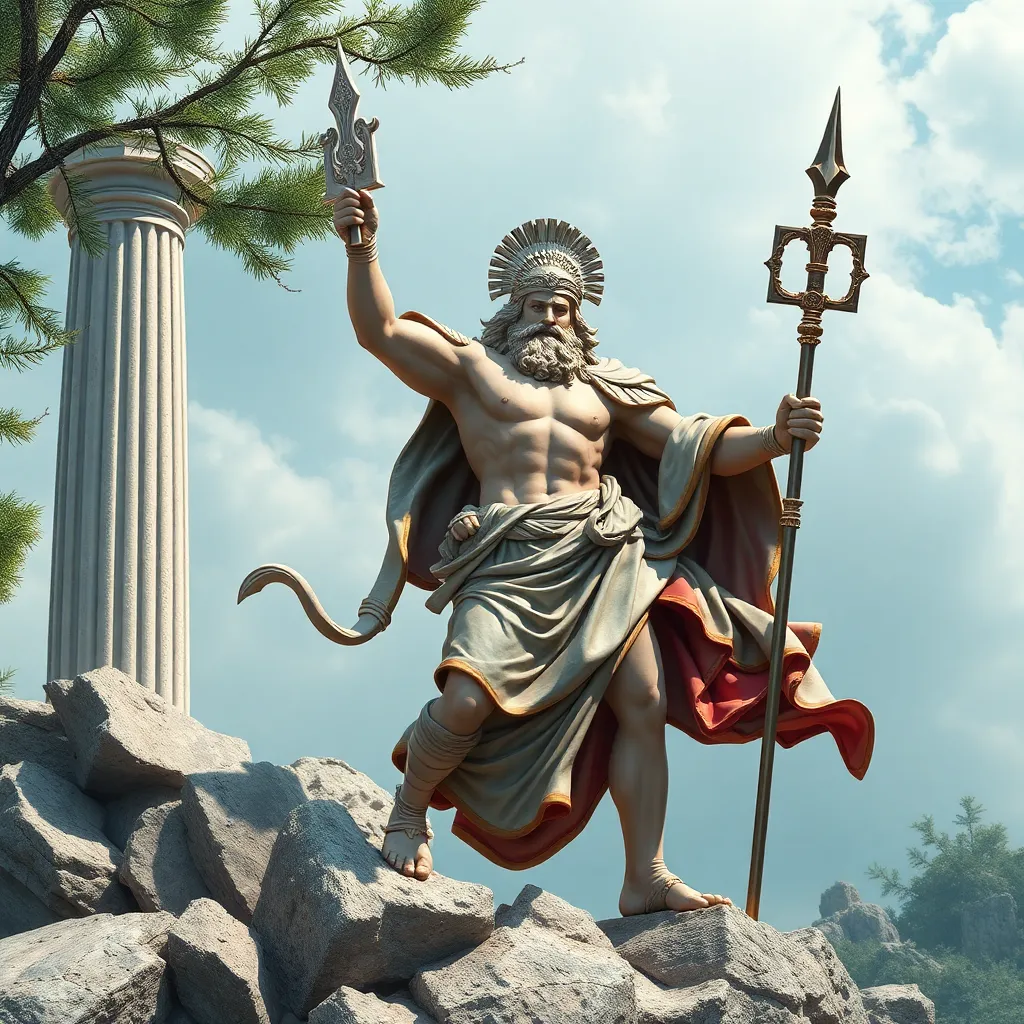The Role of Perseus in the Context of Greek Mythological Traditions
I. Introduction
Greek mythology is a rich tapestry of stories and characters that have shaped Western literature and culture for centuries. Among these figures, Perseus stands out as one of the most celebrated heroes, known for his bravery, cunning, and divine lineage. This article aims to explore the multifaceted role of Perseus within Greek mythology, examining his origins, key adventures, and lasting impact on cultural traditions.
II. Origins and Birth of Perseus
Perseus’s story begins with a complex lineage filled with betrayal, prophecy, and divine intervention. He is the son of Danaë, a mortal princess, and Zeus, the king of the gods, who came to her in the form of golden rain. His birth was surrounded by ominous prophecies that foretold danger not only to his grandfather, King Acrisius of Argos, but also to the entire kingdom.
The prophecy stated that Acrisius would be killed by his daughter’s son. To prevent this, Acrisius locked Danaë in a bronze chamber, but Zeus’s divine powers allowed him to reach her. Thus, Perseus was born, and Acrisius, upon discovering the child, cast both Danaë and Perseus into the sea in a wooden crate.
Key figures in Perseus’s early life include:
- Danaë: His mother, who displayed unwavering love and strength.
- Zeus: His father, whose divine intervention shaped Perseus’s destiny.
- Acrisius: His grandfather, whose fear of the prophecy drove him to drastic actions.
III. The Quest for Medusa
Perseus’s heroic journey truly begins when he is set on a quest by King Polydectes of Seriphos. Polydectes, seeking to rid himself of Perseus, challenges him to retrieve the head of Medusa, one of the three Gorgon sisters who could turn anyone who gazed upon her into stone.
Medusa’s significance in mythology cannot be overstated; she embodies the themes of beauty turned monstrous and the consequences of divine punishment. Once a beautiful maiden, Medusa was transformed into a Gorgon as punishment by Athena for desecrating her temple.
In preparation for this daunting task, Perseus sought the aid of the gods and gathered several divine tools:
- A reflective shield: Given by Athena, it allowed him to view Medusa’s reflection and avoid her petrifying gaze.
- A sword: Provided by Hermes, it was sharp enough to behead Medusa.
- Winged sandals: Also from Hermes, they enabled him to fly.
- A helmet of invisibility: Given by Hades, it helped him to escape after the slaying.
IV. The Slaying of Medusa
The encounter with Medusa is one of the most iconic moments in Perseus’s myth. He approached her lair with caution, using the reflective shield to avoid direct eye contact. With a swift and strategic strike, he beheaded Medusa, collecting her head in a bag, which retained its petrifying power even after her death.
The consequences of slaying Medusa were profound:
- Perseus’s act not only eliminated a deadly foe but also transformed him into a legendary hero.
- From Medusa’s blood sprang the winged horse Pegasus, symbolizing the link between life and death.
- Perseus’s actions led to further adventures, as he wielded Medusa’s head as a weapon against his enemies.
Athena and Hermes played crucial roles in Perseus’s success. Athena guided him and provided the shield, while Hermes supplied the sword and sandals, highlighting the importance of divine support in heroic endeavors.
V. Perseus’s Journey and Other Adventures
After slaying Medusa, Perseus’s adventures continued, showcasing his bravery and resourcefulness. One of the most notable episodes was the rescue of Andromeda, a princess who was to be sacrificed to a sea monster as punishment for her mother’s boastfulness about her beauty.
Perseus encountered various mythical beings on his journey, including:
- Sea Monster: Defeated by Perseus to save Andromeda.
- Other Gorgons: He faced them after killing Medusa, showcasing his courage.
Perseus’s legacy was marked by his heroism, which not only brought him personal glory but also changed the fates of those around him.
VI. Perseus as a Cultural Symbol
Perseus is often seen as a symbol of heroism and bravery, representing the archetypal hero who overcomes great challenges. His story has been depicted in various forms of art and literature throughout history, from ancient sculptures to Renaissance paintings.
His image has evolved in contemporary culture, appearing in:
- Films: Modern adaptations often reinterpret his adventures for new audiences.
- Literature: Perseus continues to inspire novels and stories that explore themes of heroism and identity.
VII. Comparisons with Other Greek Heroes
While Perseus shares similarities with other Greek heroes such as Heracles and Theseus, he possesses unique attributes that set him apart:
- Heracles: Known for his immense strength and twelve labors, while Perseus relies more on intelligence and divine support.
- Theseus: A hero of Athenian legend, whose adventures often focus on societal and political themes, unlike Perseus’s personal quests.
Perseus’s unique combination of divine assistance, clever strategies, and his journey from a vulnerable child to a heroic figure underscores his significance in the broader context of hero myths.
VIII. Conclusion
Perseus’s contributions to Greek mythology are profound, embodying the essence of heroism, the interplay of fate and free will, and the importance of divine support. His legacy continues to influence modern storytelling, reminding us of the enduring power of mythological traditions.
In reflecting on Perseus’s story, we recognize his lasting influence in literature and culture, illustrating the timeless nature of these ancient tales and their relevance to contemporary society.




